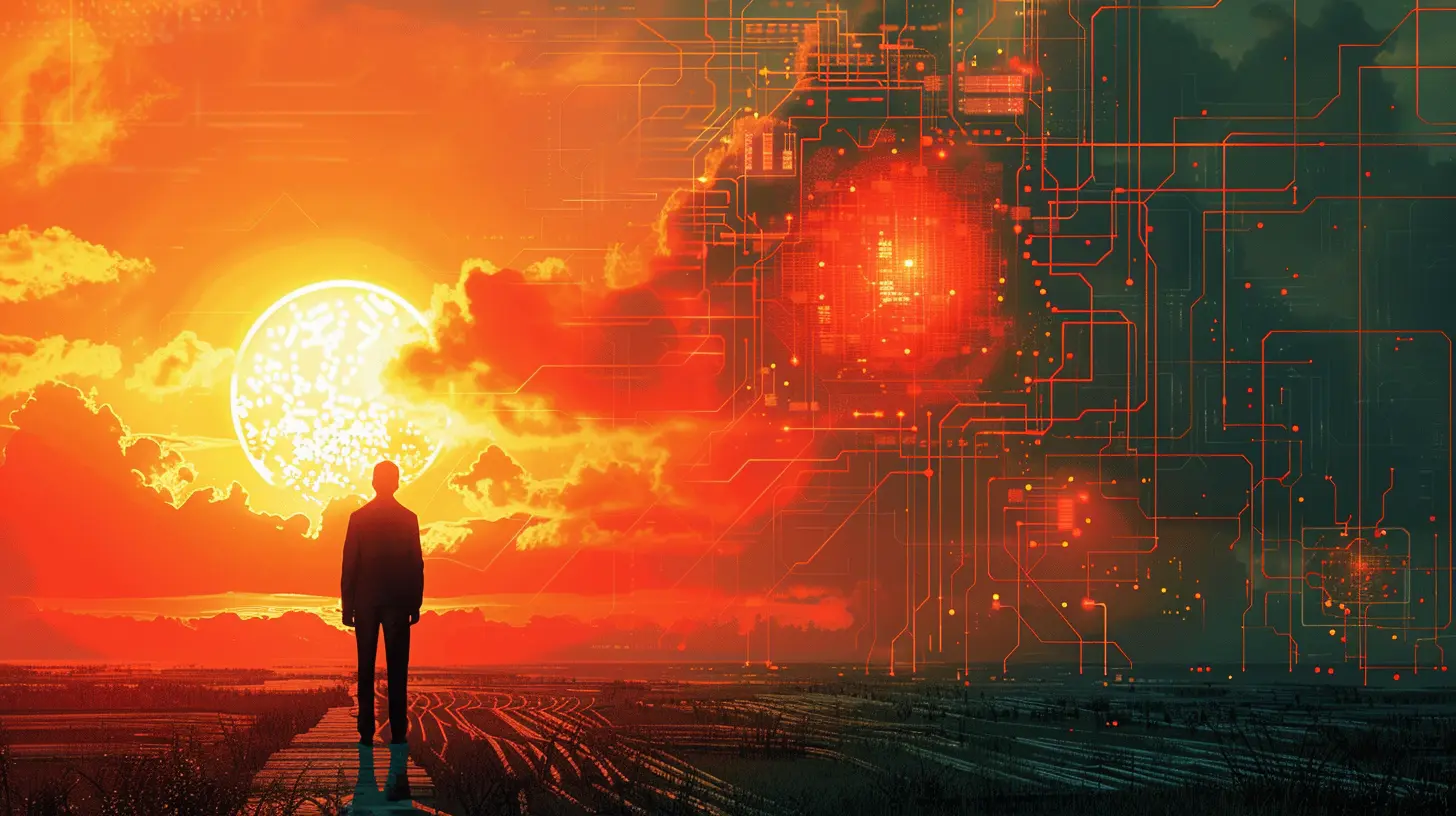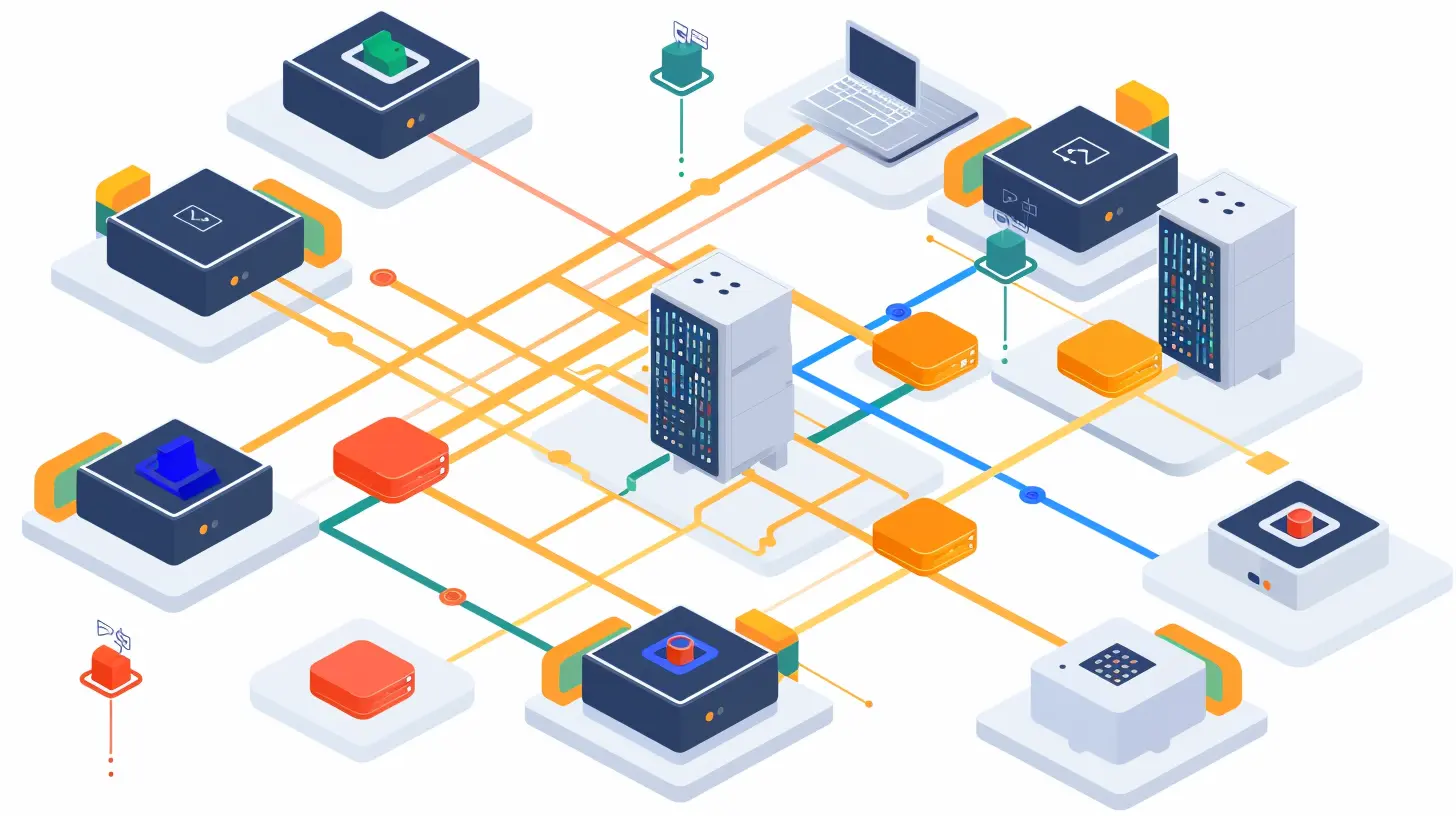Building Resilient Systems with Fault-Tolerant Architectures
12 April 2025
Technology is the backbone of the modern world. From financial transactions to social media interactions, we rely on digital systems every second of our lives. But what happens when these systems fail? Downtime, frustrated users, financial losses—things no company can afford. That’s where fault-tolerant architectures step in.
Building resilient systems isn’t just about preventing failures; it’s about ensuring that when things go south, your system bounces back—without your users even noticing. In this article, we’ll dive into what makes a system resilient, why fault-tolerance matters, and how you can integrate it into your infrastructure.
What is a Fault-Tolerant Architecture?
A fault-tolerant architecture is a system designed to continue operating smoothly even when some of its components fail. Think of it like a sturdy bridge—if one support weakens, the structure still stands.When we talk about fault tolerance, we’re referring to a system’s ability to detect a failure and either recover automatically or degrade gracefully without significant disruption. The goal? Minimize downtime and keep things running without users ever noticing the issue.
Why Fault Tolerance Matters
Every system will experience failures at some point—whether it’s hardware malfunctions, software bugs, network outages, or even natural disasters. The question isn’t if a system will fail, but when.Here’s why fault tolerance is crucial:
- User Satisfaction – Downtime frustrates users. If your app crashes often, users will turn to competitors.
- Financial Impact – Even a few minutes of downtime can cost businesses millions.
- Data Integrity – Fault-tolerant systems prevent data corruption during failures.
- Security – A resilient system is less vulnerable to attacks exploiting failures.
By designing for failure, you ensure that your system remains dependable even in the face of unexpected disruptions.
Key Principles of Fault-Tolerant Architectures
Creating a fault-tolerant system isn’t just about adding redundant components. It’s about designing an entire ecosystem that anticipates and adapts to failures. Here are the fundamental principles:1. Redundancy
The simplest way to handle failure is by having backup components. This can take multiple forms:- Hardware Redundancy – Duplicate servers, power supplies, network connections.
- Data Redundancy – RAID storage, database replication.
- Application Redundancy – Load balancing, microservices replication.
It’s like having a spare tire in your car; when one fails, the other takes over seamlessly.
2. Failover Mechanisms
Failover ensures that when a component fails, another automatically takes over. This is commonly seen in:- Database Replication – A standby database takes over if the primary fails.
- Active-Passive Clustering – A backup server stays on standby, ready to take over if needed.
Failover mechanisms ensure that disruptions are minimal and services remain available.
3. Graceful Degradation
Instead of a complete system shutdown, a resilient system scales down or operates with reduced functionality during failures. Think about a video streaming service—if the HD stream fails, users might still be able to watch in SD instead of experiencing a complete outage.4. Load Balancing
Distributing traffic across multiple servers prevents any single server from becoming a bottleneck or a single point of failure. Popular load-balancing techniques include:- Round Robin – Requests are distributed sequentially.
- Least Connections – Requests go to the server with the fewest active connections.
- IP Hash – Requests from the same user go to the same server for consistency.
5. Health Monitoring and Auto Recovery
A resilient system continuously monitors its components. If something is off, the system detects it and either self-heals or notifies engineers before a critical failure occurs. Tools like Kubernetes, AWS CloudWatch, and Prometheus help automate this monitoring.6. Distributed Architectures
Monolithic applications are prone to failing at the slightest issue. In contrast, microservices and distributed systems ensure that even if one service crashes, the rest remain operational. Netflix is a great example—they use hundreds of microservices to keep their platform running smoothly.
Best Practices for Building Resilient Systems
Now that we’ve covered the core principles, let’s look at some practical steps you can take to build fault-tolerant architectures.1. Design for Failure from Day One
Don’t wait until your system is live to think about resilience. Incorporate redundancy, failover, and self-healing mechanisms at the design stage.2. Use Cloud-Based Solutions
Cloud providers like AWS, Azure, and Google Cloud offer built-in resilience tools such as:- Auto-scaling – Adjust resources dynamically as traffic demands change.
- Multi-region Deployments – Host applications in multiple locations for disaster recovery.
- Serverless Architectures – Reduce dependency on a single infrastructure component.
3. Implement Chaos Engineering
Want to know how your system reacts to failures? Break it intentionally. Companies like Netflix use Chaos Monkey, a tool that randomly shuts down services to test resilience. By simulating failures, you can identify weak points before they become real problems.4. Automate Everything
Manual interventions are slow and error-prone. Automate deployments, monitoring, scaling, and failovers using DevOps practices and tools like:- Kubernetes for container orchestration
- Terraform for infrastructure as code
- Prometheus for system monitoring
5. Test, Test, and Test Again
Regularly test your system’s ability to handle failures. Conduct disaster recovery drills, simulate high-traffic loads, and validate redundancy configurations.6. Minimize Single Points of Failure
Identify system components that, if they fail, would cause a catastrophe. This could be a centralized database, a single data center, or a critical API. Redesign these components to have redundancies in place.Real-World Examples of Resilient Systems
Netflix
Netflix ensures uninterrupted streaming by using microservices, global CDNs, and tools like Chaos Monkey to intentionally disrupt their own systems and improve resilience.Amazon Web Services (AWS)
AWS data centers are spread across multiple regions with automated failover, ensuring minimal service interruptions.Google Search
With a distributed architecture and real-time failover mechanisms, Google Search continues working even if entire data centers go offline.The Future of Fault-Tolerant Architectures
As technology advances, fault-tolerant architectures are evolving too. AI-powered monitoring, self-healing infrastructure, and advanced distributed databases are shaping the future of resilience. Edge computing is also gaining traction, ensuring that even if the cloud fails, localized systems remain operational.For businesses, investing in fault tolerance is no longer optional—it’s a necessity. With user expectations at an all-time high, downtime isn’t just inconvenient; it’s a deal-breaker.
Final Thoughts
Building a resilient system isn’t about eliminating failures—it’s about embracing them. Failures are inevitable, but with the right architecture, they don’t have to be catastrophic. By incorporating redundancy, failover mechanisms, load balancing, and automation, you can create systems that withstand the unpredictable nature of technology.So, the next time you architect a system, ask yourself: What happens when this fails? If the answer is nothing significant, congratulations—you’re on the right path.
all images in this post were generated using AI tools
Category:
Software DevelopmentAuthor:

Adeline Taylor
Discussion
rate this article
7 comments
Josephine Bailey
Great insights! I'm intrigued by how fault-tolerant architectures can enhance system resilience. Looking forward to exploring real-world applications and examples.
April 29, 2025 at 2:33 AM

Adeline Taylor
Thank you! I'm glad you found the insights valuable. Fault-tolerant architectures play a crucial role in enhancing resilience, and I look forward to sharing more real-world applications soon!
Aleta McBride
Fault-tolerant architectures: the safety net for our tech tightrope—balance innovation with resilience!
April 23, 2025 at 7:02 PM

Adeline Taylor
Thank you! Striking that balance is crucial for sustainable innovation. Your support underscores the importance of resilience in our tech advancements!
Katalina McDonald
Great insights! Emphasizing fault tolerance is crucial for creating systems that can withstand unexpected challenges. Your article highlights the importance of resilience in tech—an inspiring reminder that robust architecture is essential for sustainable innovation. Keep it up!
April 22, 2025 at 7:39 PM

Adeline Taylor
Thank you for your thoughtful comment! I’m glad you found the insights valuable and recognize the importance of fault tolerance in building resilient systems.
Camille Clark
This article beautifully highlights the importance of resilience; such architectures truly empower our digital future.
April 19, 2025 at 3:48 AM

Adeline Taylor
Thank you! I'm glad you found the article insightful; resilience is indeed key to a robust digital future.
Seraphine Bowman
Ah, yes, because nothing says “I love my tech” quite like spending countless hours designing systems that gracefully handle failure—just like my morning coffee. Here’s to resilience, one caffeine-fueled disaster at a time! ☕️💻
April 17, 2025 at 11:47 AM

Adeline Taylor
Absolutely! Resilience is key, and a little caffeine certainly helps fuel those innovative solutions! ☕️💪
Mia McCool
In an era where reliance on technology is paramount, embracing fault-tolerant architectures isn't just prudent—it's essential. Resilience should be the bedrock of innovation.
April 15, 2025 at 8:18 PM

Adeline Taylor
Thank you for your insightful comment! I completely agree that resilience is crucial for fostering innovation in our technology-driven world.
Romina Lawson
Love this! Fault tolerance really keeps tech hiccups at bay!
April 15, 2025 at 12:49 PM

Adeline Taylor
Thank you! I'm glad you found it valuable—fault tolerance is indeed key to maintaining system reliability.
MORE POSTS

Understanding Drone Flight Modes and When to Use Them

The Role of Data Scientists in a Machine Learning-Driven World

How Quantum Computing Could Revolutionize Logistics and Supply Chains

The Art of Refactoring: When and How to Improve Legacy Code

How Quantum Computing Will Transform the Future of Energy Systems

Silent Mice for a Quiet Workspace: The Best Options Available